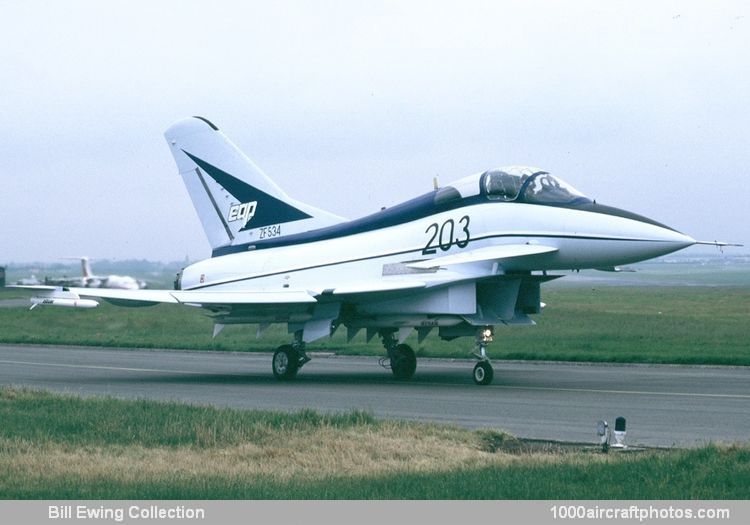12/29/2014. Remarks by Johan Visschedijk: "Designed in the early 1980s by British Aerospace with considerable input from other British and European companies, the plane known as the EAP (Experimental Aircraft Program) was conceived as an advanced technology demonstrator for the Eurofighter EFA which became the Eurofighter Typhoon. The EAP is a good example of modern design concepts, with all-moving canard surfaces in close-coupled position forward of the advanced wings. The result is a plane of the relaxed-stability type controlled by an advanced digital fly-by-wire system pioneered in the Sepecat Jaguar ACT (Active Control Technology) experimental plane. Powered by two 17,500 lb (7,938 kg) reheated thrust Turbo-Union RB.199 Mk.104 turbofans, the EAP achieved supersonic speed on its first flight, August 8, 1986.
The EAP has been actively involved in the EFA program, and among its advanced features were digitally controlled engines, carbon fiber reinforced plastic structures (including virtually the complete wing), advanced aerodynamics, and an integrated electronic cockpit. The combination of powered canard foreplanes, and wings with high-lift devices and control surfaces on their leading and trailing edges gave the EAP a high level of maneuverability and exceptionally STOL field performance. Although no armament was fitted, provision was made for a cannon, and disposable stores such as four medium-range and four short-range AAMs, or ground-attack weapons. The sole EAP is preserved at the RAF Museum."
